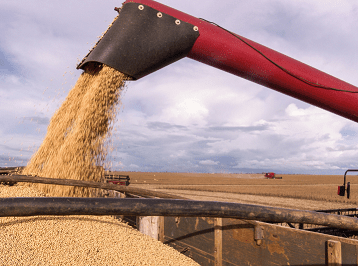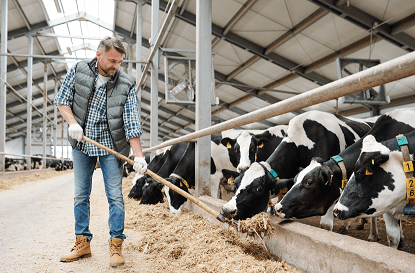My last article introduced the subject of nitrogen pollution from fertilizers causing problems both through runoff into local waterbodies and by infiltrating into the ground water and ending up in our drinking water. I have seen this referred to as “the environmental crisis you haven’t heard of yet.”

- The creation of synthetic fertilizers in the early 20th century was a turning point in human history, enabling an increase in crop yields and causing a population boom.
- The overuse of nitrogen and phosphorus from those fertilizers is causing an environmental crisis, as algae blooms and oceanic “dead zones” grow in scale and frequency.
Nitrogen Crisis in the Netherlands
The Netherlands is one of the largest greenhouse gas emitters in the European Union, and it has one of the highest nitrogen balances in the region. By 2030, the Dutch government must reduce the country’s nitrogen emissions by 50%. The government’s attempts to address the problem by reducing the numbers of farm animals in the region were met by angry protests from farmers, who saw their livelihoods being attacked. Watch this short video to better understand the problem.
Nitrogen Crisis in the Netherlands
Nitrogen Pollution in the News

Latest EPA assessment shows almost no improvement in river and stream nitrogen pollution
Minnesota state agencies plan to address karst region well nitrate contamination
Lawmaker: Raise fertilizer fees to help pay cost of nitrate pollution
Researchers are finding high levels of fertilizer in drinking water from rural Kansas wells
What is the Solution to Nitrogen Pollution?
Multiple global environmental groups have called for public campaigns to raise awareness about the impact of nitrogen pollution and possible solutions. Unfortunately, the threat is not generally known or understood by the general population. Through honest discussion and collaboration, we can create a sustainable solution for a cleaner and healthier environment.

- Government Can:
- Adopt environmental policies to target nitrogen pollution reduction.
- Invest in research to reduce nitrogen loss from synthetic fertilizers.
- Improve reporting and data collection capacity to identify nitrogen sources.
- Set performance standards for fertilizer manufacturers to spur innovation.
- Individuals Can:
- Understand your nitrogen footprint and make lifestyle changes.
- Use lawn and garden fertilizers properly.
- Agriculture Can:
- Adopt more widespread use of Precision Agriculture practices.
- Plant more cover crops and filter strips.
- Cover stored manure to reduce ammonia emissions.
- Manage irrigation to minimize drainage.
- Wastewater Treatment Can:
- Redesign wastewater treatment plants to not waste nitrogen through denitrification but recover it and turn it into fertilizer.
Solving nitrogen pollution is complex and not easy but it’s an issue we cannot afford to ignore. We don’t want algae blooms to become a common occurrence on Lake Maxinkuckee like they have on other lakes.
“Every time you are tempted to react in the same old way, ask if you want to be a prisoner of the past or a pioneer of the future.”
Deepak Chopra
The Chopra Foundation
A non-profit entity for research on well-being and humanitarianism

Hi, I’m Debbie Palmer. I received a BS in Horticulture from Purdue University. Here at LMEF, I am responsible for outreach presentations, monitoring the lake and it’s wetlands, project manager for restoration and research projects, and act as a community resource for all things related to the well-being of Lake Maxinkuckee and its surrounding watershed. I completed Indiana Watershed Leadership Academy, volunteer with the Indiana Clean Lakes Program, Hoosier River Watch and Marshall County Lakes and Waters and serve as a Board Member for Indiana Lakes Management Society.


Recent Comments